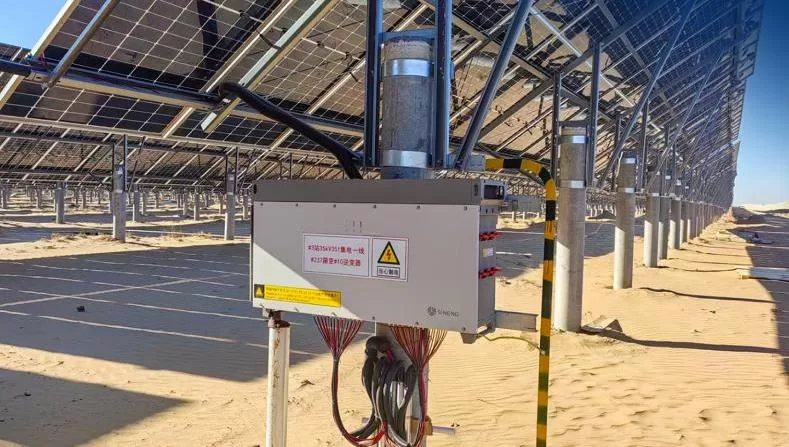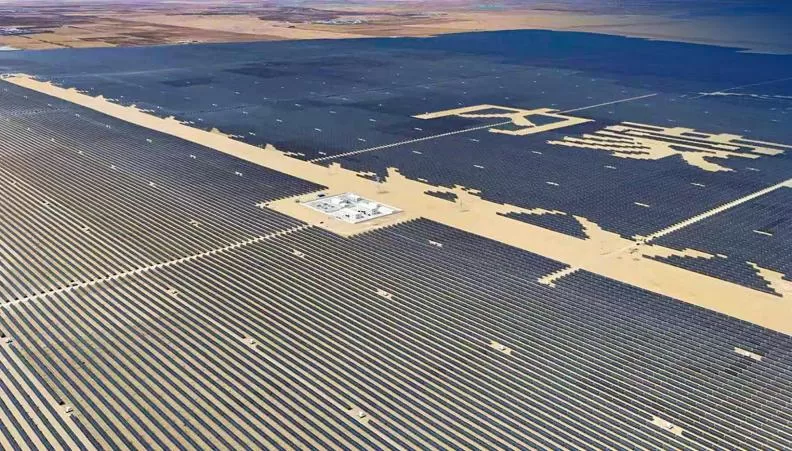Sineng Electric is powering up its 1.6 GW solar project in Inner Mongolia, China after supplying 854 MW string inverters to the solar farm. The high-efficiency string inverters will convert direct current (DC) from the solar panels to alternating current (AC) for grid supply. The latest announcement on Sineng Electric’s 1.6 GW Solar Project in China is not just for clean energy transition. It will also underscore the region’s efforts towards environmental sustainability.
Project factsheet
Developer: Sineng Electric
Location: Inner Mongolia, China
Cost: 6.973 billion RMB ($960 million)
Capacity: 1.6 GW (Gigawatts)
Solar farm area: 7,347 acres
String inverter units: 2,671 SP-350K-H1
String inverter operating power: 1,500 V (Volts)
Annual electricity production: 3.155 billion kWh (Kilowatt-hour)
Estimated annual revenue yield: 725 million RMB ($99 million)
Sineng’s 1.6 GW Solar Project in Inner Mongolia, China
The 6.973 billion RMB ($960 million) 1.6 GW Solar Project in Inner Mongolia spans more than 7,300 acres of land – carpeted with solar panels. Now operational, the solar farm in expected to produce more than 3 billion kWh of clean energy per year.
Upon connecting to the grid via the 2,671 high-efficiency string inverters provided by Sineng, an annual revenue of more than 700 million RMB ($99 million) is expected from power sales every year. This is a massive boost for the country’s economy; parallel to the large investment made to the Sineng Electric’s 1.6 GW Solar Project in Inner Mongolia, China.
The anti-PID string inverters for the solar farm
The 2,671 SP-350K-H1string inverters are nothing short of efficient. Operating at 1,500 V, they will convert the energy generated by the photovoltaic (PV) panels on the 1.6 GW solar farm to a voltage and frequency supported by Mongolia’s electricity grid. Being of modular design, the series-arranged string inverters are considerably cheap and require minimal maintenance.
Another exciting feature in the design is that if one fails, the rest of the system remains operational. According to Sineng Electric, the string inverters for the 1.6 GW solar farm in Inner Mongolia also feature 1.1 times overloading capacity, anti-PID and PID recovery capabilities.
What is Potential-Induced Degradation (PID)?
Potential-Induced Degradation (PID) happens when PV panels voltage drop due to current leaks. This causes loss of power output, and is more likely to happen due to a high negative voltage potential between the panels and the grounded system. The anti-PID prevents this, while the recovery feature helps minimizes the effects of this event in the unfortunate circumstance PID occurs.

The inverters also come with more tech advancements. These include real-time scanning and early fault “diagnoses” that allow for quick rectifications thus minimizing resources needed for on-site inspection and maintenance.
Other general features of efficiency in string inverters compared to central inverters is the use of individualized maximum power point tracking (MPPT) and better resilience to shading impact.
Sustainability efforts in Sineng’s 1.6 GW Solar Project in Inner Mongolia, China
Other than saving the atmosphere carbon emissions from about 950,000 tons of coal annually, Sineng Electric’s 1.6 GW solar project in Inner Mongolia also boasts of environmental rehabilitation.
According to the renewable energy company, the reduction of solar radiation levels on the 7,347 acres of land the solar farm sits on, and the consequent preservation of soil moisture are big wins. This will also in-turn support the sprout of vegetation cover in the area. Also in the rehabilitation program is the large-scale cultivation of “sand-fixing plants”, aimed at reducing soil erosion and desertification.
With the 1.6 GW solar project in China’s Inner Mongolia operational, Sineng Electric continues to expand its global footprint while keeping it green.

